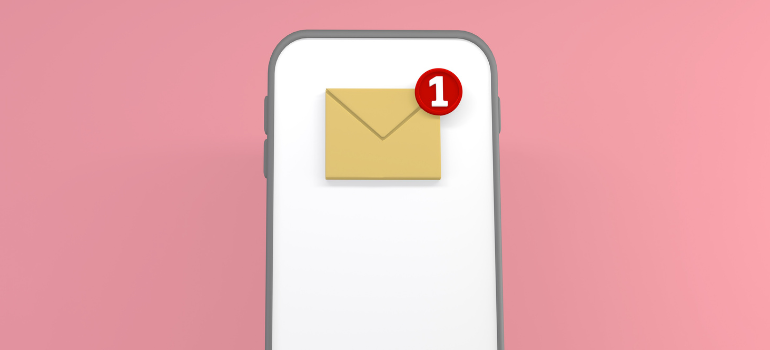
How to Develop Nurture Sequences
For any business looking to differentiate themselves from their competitors, creating meaningful connections with your audience is important now more than ever. With people getting flooded with dozens of online messages, ads, and notifications, standing out by building authentic, consistent relationships is key.
This is where nurture sequences come in. This series of automated emails help to guide potential clients through a journey that builds trust and establishes credibility. Keep reading to find out how you can develop nurture sequences that not only engage but convert.
What is a Nurture Sequence?
A nurture sequence is a series of automated messages designed to guide a potential customer or lead through a predefined journey. Although these messages are often delivered via email, they can also include SMS, social media direct messages, or other platforms depending on your audience.
In most cases, these nurture sequences start once someone signs up for your email list, whether they want to get access to a free resource or take advantage of a promo code you’re offering. From there, they receive a series of emails throughout time to bring them closer to converting, whether that conversion involves signing up for a consultation call or making a purchase.
Rather than immediately selling your product or service, you’re introducing yourself to these potential clients, sharing valuable information, and then nudging them to make a purchase once they get to know you, like you, and trust you.
Why Does Your Company Need a Nurture Sequence?
Nurture sequences provide several benefits, regardless of your business or industry — and here’s why.
They Build Relationships
People buy from businesses they trust. By providing consistent value over time, you can establish a strong, credible relationship with your audience. Through a series of targeted and timely messages, businesses can address the concerns, needs, and interests of their leads. This not only increases the chance of a sale but also builds customer loyalty.
They Maximize Sales Opportunities
Not every potential customer is ready to buy immediately. Some may be just discovering your product, others might be considering various options, and a few might be on the fence. That’s where nurture sequences come in — they act as a guide, leading potential customers through different stages of the buying process.
This marketing strategy keeps your brand top-of-mind, ensuring that when they’re ready to make a decision, you’re the first business they think of.
They Allow for Segmentation and Personalization
The most effective messages are the ones that speak directly to your audience. With nurture sequences, you can segment your audience based on specific behaviors, preferences, or past interactions. By delivering highly tailored content to each segment, brands can speak directly to the unique needs and desires of their audience, increasing the likelihood of engagement and conversion.
They Provide Automation
One of the best things about nurture sequences is they’re automated. Most forms of marketing are time-intensive, requiring businesses to spend time writing, filming, editing, and designing content. Although one-on-one interactions are beneficial, they’re not always feasible, especially as your business grows.
Automated nurture sequences streamline your communications, ensuring that potential customers receive tailored content without the need for being there to write the content yourself each time. This ensures that messaging is consistent, timely, and relevant, maximizing the return on investment for marketing efforts.
Emails to Include in Your Nurture Sequence
Although your business’ nurture sequence will be unique based on your goals and audience, there are specific emails that should be in every sequence. They include:
Welcome Message
This is your first impression and the first email your new subscribers will receive. The objective is to warmly greet the lead, setting the tone for future communications. These emails often include a thank you for subscribing/joining, an overview of what subscribers can expect in terms of content frequency and type, and possibly a special offer or exclusive piece of content.
Educational Content
Through educational emails, you can establish your brand as an expert in your field and provide value to the subscriber. These emails might include helpful insights, tips, how-tos, or industry news. This is a great place to include links to blog posts, videos, webinars, or other resources.
Engagement
Sending emails and receiving radio silence in return can be discouraging. Through these emails, you can encourage interaction and gauge the interest and needs of the subscriber. These emails may have thought-provoking questions, surveys, or prompts for feedback.
Social Proof or Testimonials
You know you’ve been able to provide amazing results for your clients or customers — now it’s time to show it off! Social proof builds trust and shows leads that your product or service has benefited others.
In these emails, share testimonials, case studies, or user-generated content showcasing the positive outcomes of your work.
Soft Sell or Introduction to Your Offers
Although you don’t want to promote your business right away, you don’t want to shy away from talking about it, either. In these emails, you can gently introduce your offering without pushing for a hard sell. That might entail sharing the benefits of your product or service or explaining how it addresses a common problem faced by your audience.
Stories or Behind-the-Scenes
Giving an inside look into your business helps to humanize it and create a deeper emotional connection. You can talk about stories of how your brand was founded, challenges you’ve overcome, or a look into daily operations or company culture.
Conclusion or Next Steps
These wrap up the sequence while sharing next steps or explaining how the relationship will continue. In these emails, you can include a summary of what’s been covered, an overview of how often your subscribers will hear from you moving forward, or an invitation to talk further.
While these are standard emails that can fit into most nurture sequences, it’s crucial to tailor the content and timing to your own audience and business goals. Always prioritize providing genuine value, building trust, and fostering a two-way relationship with your subscribers.
Getting Started with Your Nurture Sequences
Turning to a Marketing Agency for Support
If you’ve read this blog post and know that developing a nurture sequence is important, but you have no idea on how to get started, working with a marketing agency is the best way to go. At Dash of Social®, we support our clients with building nurture sequences for them and then implementing them to ensure they’re attracting and driving the right people.
Reach out to us for a free consultation if you’d like to explore what it’s like to work with our agency and how we can support you.
